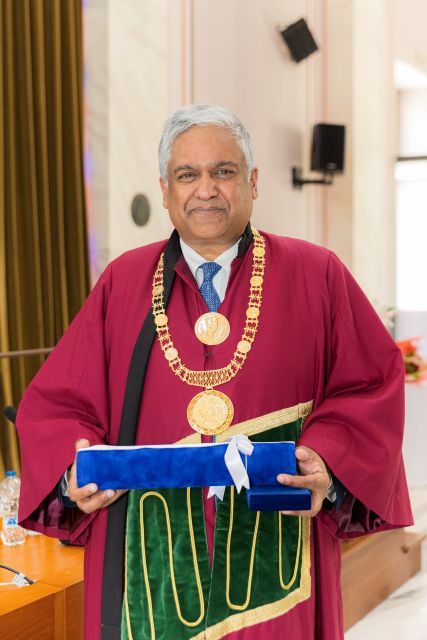
MIT’s Provost Anantha P Chandrakasan – A Man for All Seasons
What if I were to tell you that Anantha Chandrakasan, the newly appointed and much celebrated Provost of Massachusetts Institute of Technology (MIT) in Cambridge, was also the same man whose application as a graduate student to the same MIT was rejected? His story is truly one of grit, focus and persistence, of winning against the odds.
As the leader at MIT, Provost Chandrakasan navigates a rarified world, a galaxy of high achievers and innovators, not only from all 50 states of America but also 159 countries. Incorporated in 1861, MIT counts 105 Nobel Laureates, 84 McArthur Fellows and 64 National Medal of Science winners among its faculty. Getting admitted into this topnotch university is every student’s aspiration, but the reality is that it’s a highly selective college where for the class of 2028, over 28,232 students applied and only 1284 were admitted.
MIT’s claim to fame is its close connections to the real work world: it has 65 plus research centers and labs, while 700 companies collaborate on faculty and student research. Success is very attainable as the statistics show: 24 companies have been formed using MIT intellectual property, 679 invention disclosures, 323 US patents issued, and another 608 patents filed. MIT is almost as powerful as a small nation with 11,886 students, a staff or 17,000, including 1000 professors.
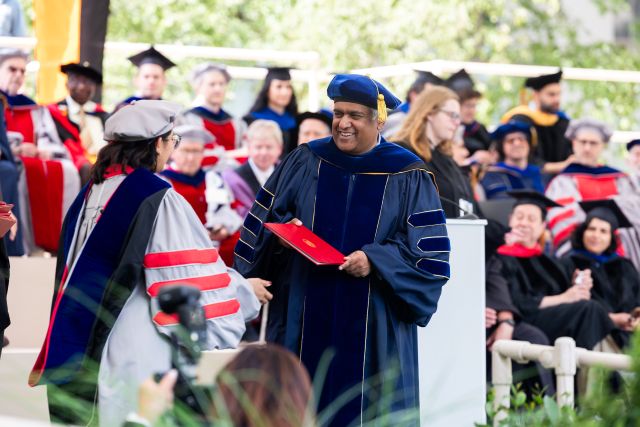
As provost, Chandrakasan reports directly to President Sally Kornbluth and serves as the Institute’s chief academic and budget officer, overseeing the entire team of vice provosts, school and college deans. He also co-chairs the Financial Scenarios Working Group which tackles the Trump Administration’s tax law which imposes the so-called ‘endowment tax’ on MIT and other universities, burdening them with a new 8% tax on the annual investment returns from their endowments.
In a way, Chandrakasan, who is also the Vannevar Bush Professor of Electrical Engineering and Computer Science, has been preparing for this potent apex role all his life. He served as dean of MIT’s School of Engineering from July 2017 to June 2025 and as the Institute’s inaugural chief innovation and strategy officer from January 2024 to June 2025. He earned his bachelor’s (1989), master’s (1990), and doctoral (1994) degrees in electrical engineering and computer sciences from the University of California, Berkeley. He joined the MIT faculty in September 1994 and served as the director of the MIT Microsystems Technology Laboratories from July 2006 to June 2011. From July 2011 through June 2017, he served as head of the Department of Electrical Engineering and Computer Science (EECS). He has been intricately involved with various aspects of MIT through the years. Chandrakasan is also the senior executive advisor to the MIT Climate and Sustainability Consortium (MCSC) and serves as co-chair of the MIT-IBM Watson AI Lab and the Tata-MIT Alliance, both of which he founded.
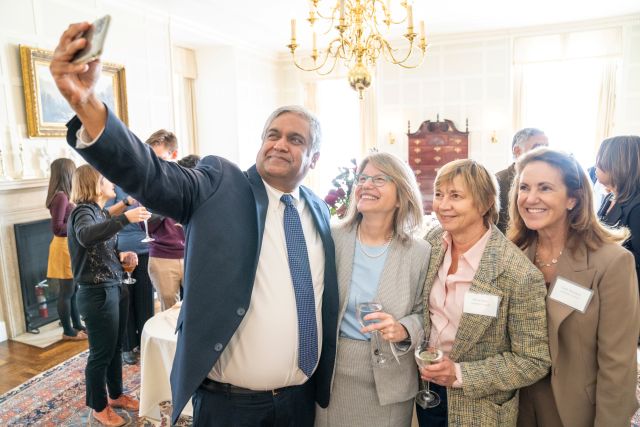
As provost, answering only to the MIT president, he has to juggle many varied roles – he is head honcho, banker, marketer, captain of the team, coach, guide and philosopher. In changing times, he is also the innovator and strategist who will take the MIT team into the troubled and challenging future.
Provost Chandrakasan sat down for an expansive interview – here are excerpts.
For many in the world, especially the Indian Diaspora, to be affiliated with this iconic university is a dream and aspiration. What were your thoughts on being the first ever person of Indian origin to be provost at MIT?
I really see myself as an enabler for our community, which includes faculty, students, post doc staff, for them to continue to make extraordinary contributions and impact, whether it’s in scholarship, educational innovations, or entrepreneurship. My role is to promote excellence in academics, research and entrepreneurship. I’m deeply honored to take on this incredible responsibility, and I’d like to deliver on the promise of enabling excellence.
Could you tell us about your growing up years in Chennai, India and how important that experience was to mold the person you’ve become.
I would say that every experience in life matters. India had a profound impact in shaping who I am. Grew up in Chennai, in India, and I was there through the 11th grade, when my mother was a scientist, a biochemist, and she worked in central leather Research Institute in India, in Chennai. And she would bring me, when I was young, to her laboratory, and she would perform experiments and would talk about science and the importance of advancing it. Her work ethic, her energy, just seeing her operate was amazing. She published very important work on collagen and wound healing. So, I would say that she was an important inspiration for me. I studied in Vidya Mandir and Mylapore, an excellent school in Chennai. And before that, I was in a school called St Michael’s Academy in Adiyar, and I was there to my 11th. At the end of 11th, I came to the US to visit my mother, who was on a Fulbright scholarship.
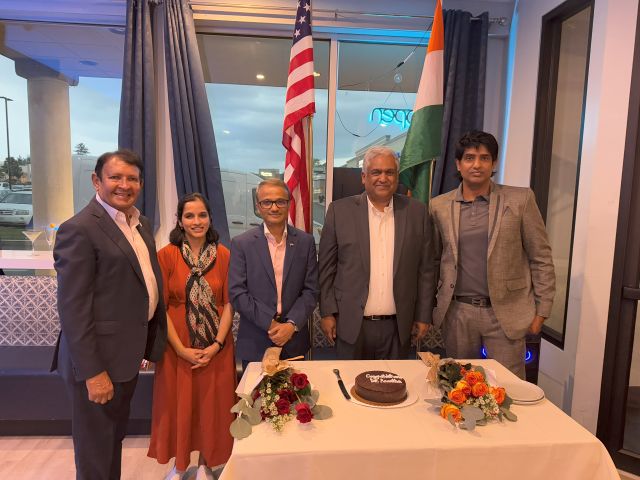
Coming back to your question, one of the experiences in India I had was meeting a senior colleague of my mother in India, who was helping me with mathematics and really had a big influence on me. So, he came home, tutored me and instilled the importance of attention to detail and practice. And I often remember that he would come and I wanted to go play cricket, but he was always persistent, and he never wavered, remaining committed to my progress. It’s such a reminder that one person, a single dedicated individual can ignite a passion and can foster the confidence that a student needs for long term success.
So, I always pay that forward, and I get so many emails from prospective applicants, and directly, and till recently, and now it’s become just overwhelming, but I used to respond to them, there’s somebody on the other side. I did my best, not always perfect, but what everybody needs is a little bit of encouragement. And it doesn’t take a whole army; it just takes one person. So always remember that you can make a difference to somebody.
How do you think your Indian education and career track prepared you for this very challenging job?
It’s a very intense education, intense hard work and persistence. And of course, even though I was only there till the 11th, I got to experience that intensity, hard work, and that persistence. I was at UC Berkeley as an undergraduate and I applied for an internship in a wireless company that did low power design, and that’s important, because that was my PhD, and I wasn’t selected.
And then my advisor Robert Protestant gave me an opportunity of a summer research position in his lab, and that had such a profound impact on me, wanting to do research. And again, it’s about persistence. And so, when I became a faculty member, 20 years after I joined, I was the head of electrical engineering and computer science, I created a program similar to my own experience. I had called the superurop program at MIT. MIT already had undergraduate research called UROP (undergraduate research opportunities program), superurop put that on turbo mode, it allowed undergraduate students to publish papers in top journals. And so, I replicated my experience. And again, it’s story of persistence, and mentorship and the kinds of things that I experienced in India that I was able to translate. And another example of persistence: I applied to graduate school after my undergraduate at Berkeley, and I was rejected by MIT.
I remember being on the call with the admissions office. I spoke to them for like an hour, and I got very emotional, but that wasn’t the last chapter for me and MIT. Ultimately, I ended up doing my doctoral work with the same mentor, the person who gave me that opportunity, and ended up working on low power design. That was my PhD, and it was the same thing that I was rejected for as an undergraduate summer internship, and that paper with my advisor ultimately became one of the most cited papers in this prestigious journal, The Journal of Solid State Circuits, and that had a big role in me becoming a faculty member.
What does that tell you about yourself and about MIT? I mean, that such a thing happened to you?
Not everybody can get accepted into programs that have limited space, there’s a lot of talent out there. And, you know, be persistent. I had an amazing time at my PhD at UC Berkeley, but you have to make the most of the platform that you’re given. That’s the biggest advice I can give any students. You know, everybody has a platform to showcase themselves, make the most of it, and then better things will come. That’s so true. Yes, so many students that I talk to don’t get admitted, whether it’s MIT or somewhere else, but I tell them that’s not the last chapter. There’s plenty to achieve.
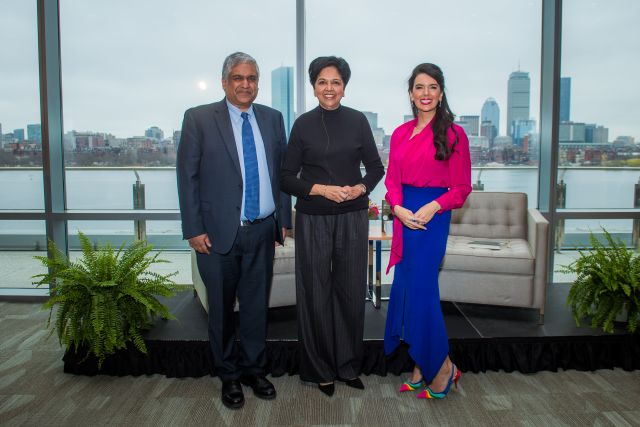
With rising concerns about higher education costs, what measures will you take to make MIT more accessible to underrepresented American students, balancing financial aid with institutional sustainability?
MIT’s mission is to advance knowledge and educate students in science, technology, and other areas of scholarship. The broad-based access to the internet has made MIT innovations and education more accessible. Creating open-source knowledge is the future, and it is fortunately core to MIT’s DNA.
We are proud that we have launched in July 2025 a new platform for MIT educational content. MIT launched a dynamic AI-enabled website (MIT Learn) for the Institute’s lifelong learning opportunities. MIT Learn brings together more than 12,700 non-degree learning resources — most of which are free — making it easier than ever for learners to find exactly what they need when they need it. Learners anywhere in the world can browse introductory and advanced courses, upskilling and reskilling programs, and other resources, including videos and podcasts, all in one place.
Learners get personalized recommendations using “AskTim,” a chatbot that helps them quickly discover courses and resources aligned with their personal and professional goals. Learners can prompt AskTim for a course summary — including the structure, topics, and expectations — so they can make informed decisions before diving in.
In select offerings, learners can also interact with an AI assistant by asking questions about a lecture, requesting flashcards of key concepts, and obtaining instant summaries. These select offerings also feature an AI tutor to support learners as they work through problem sets, guiding them toward the next step without giving away the answers.
MIT uses its resources to operate one of the most generous financial aid programs in the world. All undergraduate students, from all backgrounds, are eligible for as much scholarship as their individual family needs to afford MIT.
Last year, we allocated more than $167 million in undergraduate financial aid. The median MIT student on financial aid received $66,663 in scholarship and only paid $12,938 to attend MIT. Meanwhile, nearly 40% of students attended MIT tuition-free, and 87% graduated debt free.
Beginning this year, we have further increased our financial aid, with new policies that mean undergraduates from around the world with family income below $200,000 USD can expect to attend MIT tuition-free. All of this is possible because of the many people over the decades who have donated to dedicated scholarship funds because they believe what we believe: that the best students from around the country and the world should be able to attend MIT because of their talent, not their checkbook.
What steps will you take to protect academic freedom? In light of President Trump’s past critiques of universities, how will you safeguard MIT’s commitment to open inquiry and diverse perspectives?
MIT’s ability to produce groundbreaking discoveries and innovations depends on its ability to be self-governing, and on the freedom of our faculty, research staff and students to pursue what they deem to be the most important and fruitful directions in their research. Those are bedrock principles, and we stand by them.
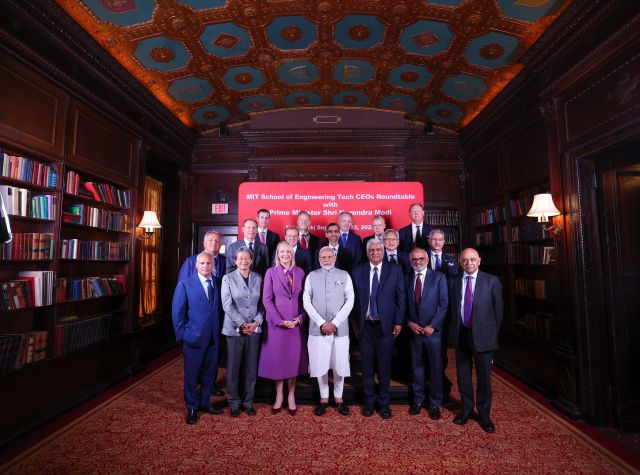
How will you strengthen MIT’s industry partnerships? As provost, how will you expand collaborations with American tech giants in semiconductors and biomanufacturing? What role will these partnerships play in preparing students for global challenges?
During my eight years as dean, I led the creation of many interdisciplinary programs, focusing on new models for how academia and industry work together to accelerate the pace of research. This resulted in the launch of initiatives including the MIT Climate and Sustainability Consortium, the MIT-IBM Watson AI Lab, the MIT-Takeda Program, the MIT and Accenture Convergence Initiative, the MIT Mobility Initiative, the MIT Quest for Intelligence, the MIT AI Hardware Program, the MIT-Northpond Program, and the MIT-Novo Nordisk Artificial Intelligence Postdoctoral Fellows Program.
As MIT’s inaugural Chief Innovation and Strategy Officer, working closely with President Kornbluth, I helped launch the MIT-GE Vernova Energy and Climate Alliance, the Generative AI Impact Consortium (MGAIC) and the MIT Health and Life Sciences Collaborative (MIT HEALS).
In each case, we’re helping industry allies connect with faculty whose work is of interest, and creating mechanisms, including seed funds, to inspire new faculty collaborations across academic disciplines as well as with people in industry and hospitals focused on related problems.
Our industry collaborations are also key to supporting research excellence and the next generation of talent (e.g., support through graduate fellowships). The industry collaboration allows us to scale our solutions rapidly for impact. Expanding our industry connections is a high priority for me. This is particularly true in areas such as AI, biotechnology, semiconductors, quantum computing, and manufacturing.
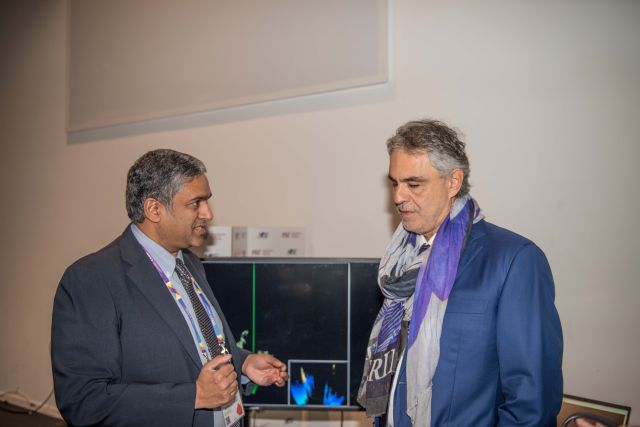
What’s your plan for integrating humanities with STEM at MIT? How will you promote interdisciplinary education to prepare students for complex societal issues? Can humanities programs remain robust amid potential federal funding constraints?
MIT has an incredibly rich history of incorporating the humanities in undergraduate education. I only see the importance of the humanities, arts and social sciences growing.
The humanities play a central role shaping our STEM students today. As CISO, I co-led the creation of the MIT Human Insight Collaborative (MITHIC). It fosters an ecosystem of individual excellence and cross-cutting collaboration in humanities research, as well as providing the substrate for collaborations between the humanities, arts, and social sciences and STEM.
Collaboration with scholars in our human-centered disciplines has already led to important new initiatives at MIT.
The Social and Ethical Responsibilities of Computing (SERC) in the MIT Schwarzman College of Computing draws on expertise from across the Institute to integrate social and ethical considerations into our computing curriculum.
With new courses like Ethics of Computing, co-taught by a philosopher and a computer scientist, our aim is to ensure those who will create and deploy new computing technologies do so responsibly and in the public interest.
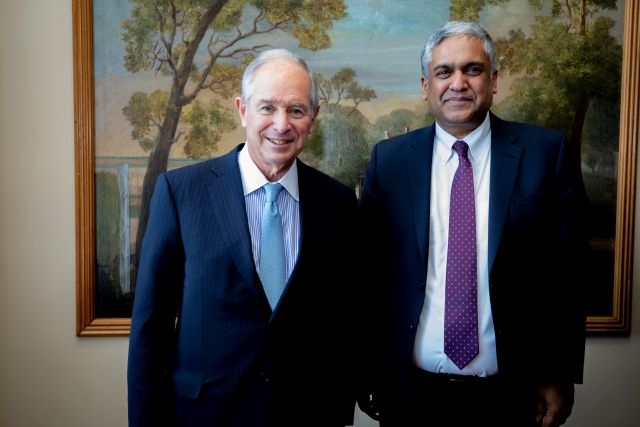
MIT is launching a new graduate program in music technology and computation this fall. This program is truly multidisciplinary, with faculty, labs, and curricula coming from the Music and Theater Arts Section and the School of Engineering.
For MIT to have the greatest impact, we must continue to champion this interdisciplinary and human-centered approach to educating the leaders of tomorrow, conducting research, and solving challenges.
How will MIT lead in climate and sustainability research? What initiatives will you prioritize to position MIT as a global leader in addressing climate change? Can you secure international partnerships to amplify these efforts?
Under President Sally Kornbluth, we established The Climate Project at MIT as a key presidential priority. Professor Evelyn Wang has been appointed as the MIT Vice President for Energy and Climate and expected to take a global view to address the intertwined challenges of energy and climate.
Climate change is poised to fundamentally alter natural environments and human systems—but if we seize this moment, we can shape the future we want. This is a generational opportunity to rethink how we live and build a healthy, resilient, and sustainable future for all.
We must collaborate on a new scale. Tackling climate change goes beyond inventing new technologies and refining models. It calls for the design of networks, systems, and strategic partnerships that can scale transformative solutions globally. MIT is rising to the challenge. MIT’s culture of curiosity, rigor, and relentless experimentation makes us uniquely suited to cross boundaries, break down silos, and build something new.
MIT is about reimagining what’s possible. Through the Climate Project, MIT aims to become one of the most prolific, collaborative sources of climate solutions that can be implemented at scale. With a shared commitment to systems innovation and large-scale transformation, we can shape a better future that improves human well-being and ensures our prosperity.
First of all, I see tremendous potential, tremendous potential for collaboration between MIT and, more broadly, researchers and educators in the US and with the educators, researchers, scientists in India in many areas, but I would say, particularly in AI education. This is one of the most transformative technologies that we’ve seen right in a long time, and it’s going to impact every field, whether it’s finance, manufacturing or agriculture. One of the core fields in India that shape the economy, embedding AI into education is going to be key.
I see lots of collaboration in areas such as semiconductors and energy and Climate, manufacturing, entrepreneurship, biotech and so on, so many areas. But if I have to pick one that I would say I see not only a need, but an urgent need. I would say there’s an urgent need to kind of get this type of education broadly. And we have this experience at MIT, the computing bilinguals that you know, every student should be versed in AI, and that’s something I think we can organize and we can scale up.
What support are you going to offer the Indian students at these troubled times? will you be able to advocate for Indian students who are navigating H 1b, visas under Trump. How will MIT ensure that these students thrive in a competitive, academic environment?
As you know, I was an international student and I’ve been through those kinds of processes, so you have to appreciate it from the other side. And how do we maintain MIT’s success and leadership? Well, you have to be a magnet for the finest and top talent from around the world. Bringing in different perspectives to solving problems is so important and we have to understand how people across the world think. I believe that more than anything, and I have as a top priority to provide meaningful support to our graduates and to the maximize the impact that they’re going to have on the world. So, whether that ends up being in the United States or their home country, I believe very, very strongly – underscore that – US should encourage top talent from other nations, and it’ll help build out the US economy as it has in the past. And I will work very hard to ensure that everybody who joins our community at MIT feels welcome to be here.
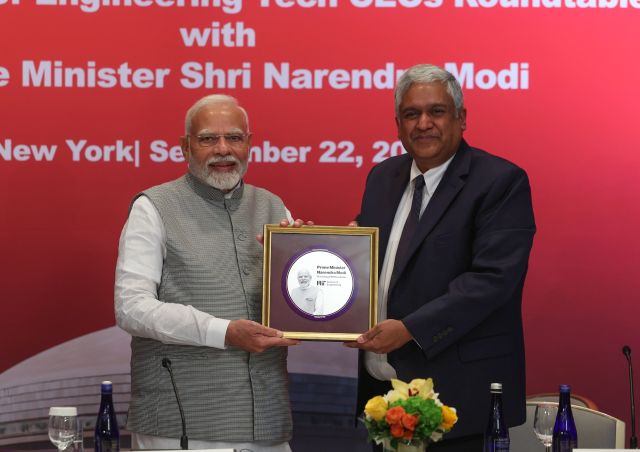
To get a full picture of the provost and the man, could you tell us a bit about your family and your other passions besides MIT? Are you a foodie and do you go back to Chennai?
I think somebody once asked me what my hobby is and I said, MIT! It seems like that. But I’d say that outside MIT, I enjoy watching sports, especially American football. It’s something that I’m very passionate about. I have three children, two girls and a boy and they all have different interests, which is good. Honestly, the jobs that I’ve held are quite intense, and I’m deeply dedicated to supporting our community, so this gives me very little time to do other things.
I’m a vegetarian and I love all kinds of food, of course Indian, and cuisines from around the world. I do go back to Chennai but not as often as I would like and I do plan to go more often.
Finally, what is the personal quality that Ayou feel is the most important in accomplishing the challenges you face? What is something special that you have which makes you face everything?
There’s a couple of things. One, I don’t always show it, but I’m very empathetic, so I always put myself in somebody else’s shoes and I try to understand. Coupled with that I like to solve problems and get to solutions quickly. So really understanding other perspectives is something I try to do across the board, but it’s a very fast moving pace job, right? So, you have to always act quickly as well.
So, you have to listen to different perspectives and come to solutions that accommodate everyone with different needs. You’re kind of like a man for all seasons for everybody. Would that be right?
I think that’s correct. And what you will find is the needs vary widely. For some that will be in the areas of wanting to support their research and their scholarship and enterprise. For others, it’s dealing with issues they may have outside of MIT. So, it’s really, as you said, listening and supporting, but really dealing with a wide range of issues, both work and non-work related. So, you really have to be a good listener. So, it’s like bilingual again; I would say it’s something I will continue to learn and one of the things that allows me to get to things quicker is that I’ve understood different scenarios and situations over a very wide group of people.
(A shorter version of this interview first ran in The Week in India – https://www.theweek.in/theweek/more/2025/08/23/us-should-continue-to-welcome-top-talent-from-other-countries-anantha-p-chandrakasan-provost-mit.html
Related Articles on Indian-Americans
From Chennai to Harlem: First woman CMO breaks barriers
